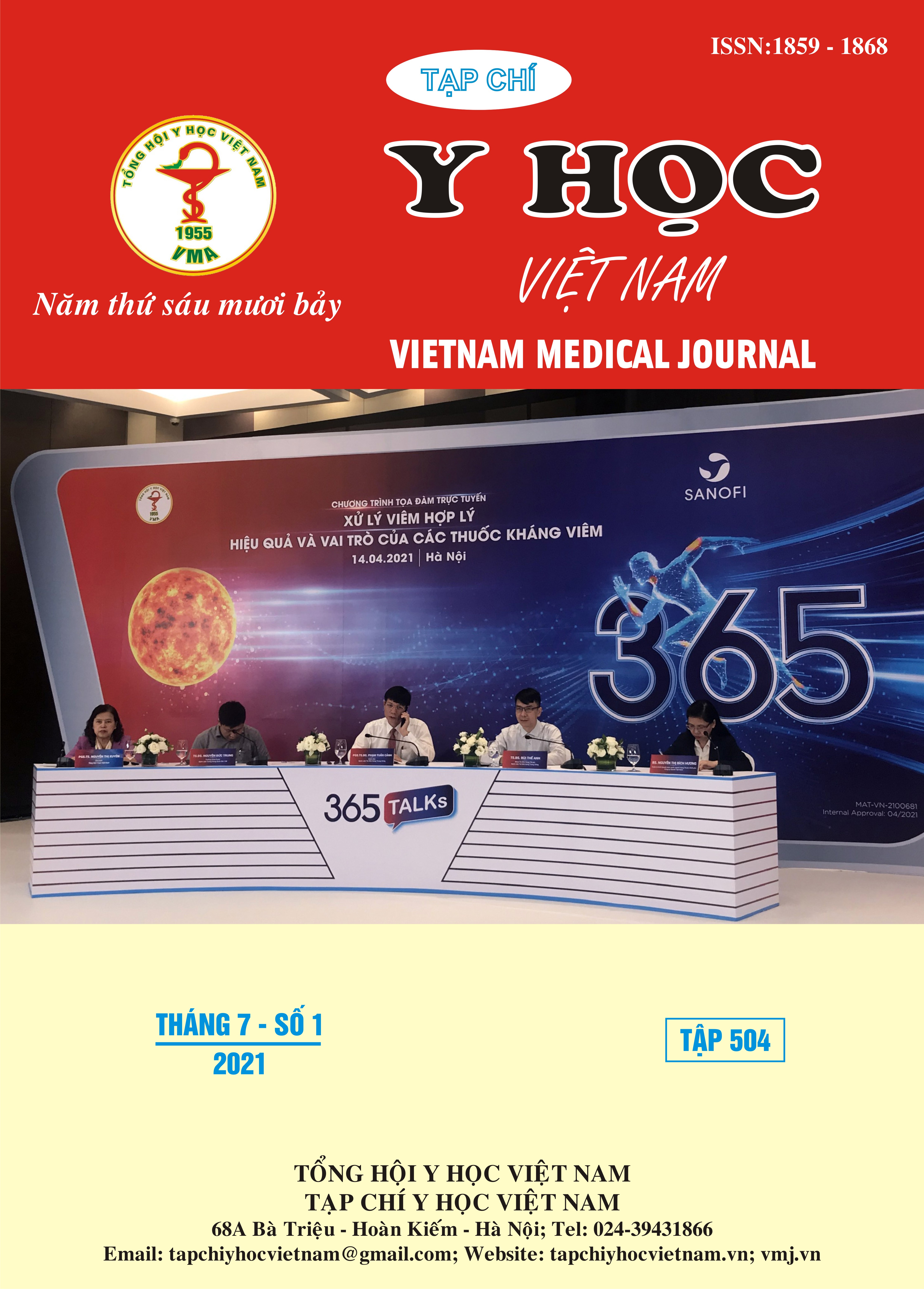STUDY THE EFFICACY OF ASSISTED INTUBATION FOR THE PATIENS WITH CERVICAL SPINAL SURGERY
Main Article Content
Abstract
Objective: To Compare the efficacy of assisted intubation with the Macintosh in the patients with cervical spinal surgery and complication this methods. Methods: In the 160 patients with cervical spinal surgery included group I using intubation with assisted video (n = 80) and group II with Macintosh (n = 80). Follow up the first time success ratio, the Cormack and Lehane, POGO, patients should be cartilage ring pressed down, patient should be put the neck up; the times (seconds) of the intubation, sore throat, hoarse voice after surgery. Results: the number of patients needed to be pressed cartilage ring down, to be put the neck up in the group I less than that in the group II; the POGO in group I is higher than that in group II (p <0.05); Cormack and Lehane levels in group I were lower than that in group II with p <0.05; Intubation time: group I was faster than group II (p < 0.05); The success rate of group I was higher than that of group II with statistical significance p < 0.05; the rate of sore throat, hoarseness after surgery of group I was lower than that of group II with p < 0.05. Conclusions: the number of patients needed to be pressed cartilage ring down, to be put the neck up in the group I less than that in the group II (p <0.05), the POGO in group I is better than that in group II; Intubation with video assissted: Cormack and Lehane levels in group I were lower than that in group II with p <0.05. The first successful intubated: group I was higher than that of group II (p < 0.05); Intubation time: group I was faster than group II (p < 0.05); the rate of sore throat, hoarseness after surgery of group I was lower than that of group II with p < 0.05.
Article Details
Keywords
Intubation with video assissted, Video laryngoscopy
References
2. Atabak Najafi et al (2014), “Postoperative sore throat after laryngoscopy with Macintosh or glidescope video laryngoscope blade in normal airway patients”, Anesth pain med 3(3); et 5136.
3. F. S. Xeu, G. H. Zhang, J. Liu et al (2007), “The clinical assessmant of Glidescope in orotracheal intubation under general anesthesia”, Minerva anestesiol 73:451-7.
4. Gusen Seok Choi et al (2011), “A comparative study on the usefulness of the Glidescope or Macintosh laryngoscope when intubating normal airways”, Korean j Anesthesiol 60(5): 339-343.
5. Kalingarayar S et all (2017). Airway trauma during diffcult intubation from the frying pan into the fre?, Indian J Anaesth 2017, 61, 437-439.
6. Maria Michailldou, Terence O’Keeffe, Jarrod M.Mosier et al (2012), “Acomparison of Video laryngoscopy to direct laryngoscopy for the Emergency Intubation of Trauma Patients”, World journal of Surgey DOI 10.1007/s00268-104-2845-z.
7. Michael F. Aziz, M.D., Dawn Dillman, M.D., et al (2012), “Comparative Effectiveness of the C-MAC Video Laryngoscope versus Direct Laryngoscopy in the Setting of the Predicted Difficult Airway”, Anesthesiology; 116: 515-7.
8. Roya Ymul MD et al (2016), “Comparison of three video laryngoscopy devices to direct laryngoscopy for intubating obese patients: a randomized trial”, Journal of Clinical Anesthesia 31, 71-77.
9. Roya Yumul MD, Ofelia L. Elvir MD, Paul F.White PhD et al (2016), “Comparison of the C-MAC video laryngoscope to a flexible fiberoptic scope for intubation with cervical spine immobilization”, Journal of Anesthesia 31, 46-52.


